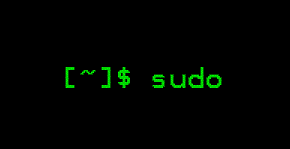For Linux system administrators, managing servers and executing commands using a sudo user is a common security practice. Additionally, disabling root user login is a complementary security measure. This article will guide you through creating a sudo user and disabling root user login on Linux cloud servers. It applies to various Linux distributions, including CentOS, Ubuntu, Debian, FreeBSD, and more.

A sudo user is essentially a regular user within the Linux operating system. For instance, let’s create a regular user named 'zhaomu'.
adduser zhaomuThe wheel group is a restricted user group that permits users to execute commands with administrative privileges. Only users in this group can execute sudo commands. In Ubuntu/Debian operating systems, the sudo group usually replaces the wheel group’s function.
CentOS
usermod -aG wheel zhaomuUbuntu/Debian
usermod -aG sudo zhaomuFreeBSD
pw group mod wheel -m zhaomuThe configuration file for sudo is /etc/sudoers. It’s crucial to ensure that this file is correctly set up for the proper execution of sudo commands.
vi /etc/sudoersLocate the following code:
# Allow members of group sudo to execute any command
%sudo ALL=(ALL:ALL) ALLMake sure your Linux cloud server is configured in this manner. Note: Some Linux systems use %wheel instead of %sudo, which is also acceptable.
If you’ve modified the /etc/sudoers file, it is necessary to restart the SSH service for the changes to take effect.
CentOS 7
systemctl restart sshd.serviceUbuntu/Debian
/etc/init.d/sshd restartFreeBSD
/etc/rc.d/sshd startAfter completing the aforementioned steps, log out of the remote session and log back in as the sudo user. Execute the following commands to test if sudo is configured correctly.
sudo uptime
sudo whoamiThe command sudo whoami should return 'root'.
Using the su command, you can switch from the sudo user to the root user.
suOnce everything is tested and working correctly, proceed to the final step, which is to disable root user login. This involves editing the SSH configuration file.
sudo vi /etc/ssh/sshd_configUse the :w/ command to search for the following code, remove the hashtag # from the beginning of the line, and set the value to 'no'.
PermitRootLogin noFollowing the instructions above, restart the SSH service. Attempt to log in with the root user; if unable to log in, the setting is successful.
23-02-2024 02:02:07
22-02-2024 03:19:32
22-02-2024 03:16:03
22-02-2024 03:14:03
22-02-2024 03:11:58